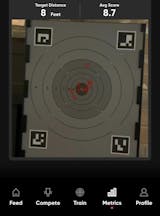Dry-firing a gun refers to shooting practice without live fire ammunition. It is an old practice used for decades for pistol and long gun practice.
A dry-fire drill can be valuable for practicing different shooting drills and techniques and developing muscle memory. It is a great way to learn fundamental shooting skills if you are a beginner.
Advanced and intermediate shooters can also use dry-firing to improve their technique. However, even without live ammo, there are safety guidelines to adhere to.
Below is expert advice on what you need to know about dry-firing a gun.
How to Dry-Fire a Gun
The basic process of dry-firing a gun is simple and straightforward. Essentially, you just need to pick a target and shoot at it with a firearm that's unloaded. Determine your target, align the sights, position your finger correctly on the trigger, then slowly fire. Repeat this process. Use each repetition as a simulation of real-life scenarios.
Take time to achieve a proper sight picture as part of your dry-fire practice. If you use iron sights, your front sight should be in focus, while the rear sight should be out of focus. Keep your eye on the front sight. If you use optic sights such as a red dot sight or holographic sight, keep your attention on the field of view for faster target acquisition.
Remember that there is a slight difference in trigger control between dry-firing and live-firing. The main difference is in the feedback, and the sensation of the trigger pull. When dry-firing, there is no recoil or physical feedback from the firearm.
While live-firing generates physical and auditory sensations when the pin strikes the primer and the round is discharged, it is not the case with dry-firing. Both scenarios can impact how you control the trigger.
Therefore, focus on making the trigger pull smoother and slower. The lack of feedback and sensations when dry-firing enables you to focus on perfecting your mechanics of trigger pull.
Techniques and Drills That You Can Practice With Dry-Firing
Here is a wide range of shooting skills you can learn through dry-firing training, including:
- Trigger control
- Sight acquisition
- Sight alignment
- Draw technique
- Sight picture and alignment drills
- Draw and presentation drills
- Reload drills
- Movement drills
- One-hand shooting drills
- Body mechanics mastery
- Shooting from different positions
- Timed drills, etc.
Incorporate Visualization in Your Dry-Fire Training
Incorporating visualization in your dry-fire training can improve your proficiency significantly. You can use it as mental imagery to simulate live scenarios. Also, imagining the various shooting steps before doing the actual technique serves as a mental rehearsal.
For example, visualize yourself drawing the firearm, aligning the sights, and smoothly pulling the trigger. You may also use visualization to account for various aspects of live-firing, such as recoil management. Visualization increases your chances of correctly executing your shots in dry and live training.
Observe Safety Measures When Dry-Firing a Gun
The most important firearm safety precaution is to ensure that your gun is unloaded before you start your practice. Do not assume that there is no live round ammunition or that someone else unloaded it for you—double-check that the gun is empty.
Therefore, before each dry-fire practice session, open the cylinder or remove the magazine and check the chamber. If there is ammo, remove it and store it safely.
Experts recommend not having ammunition nearby when dry-firing to prevent the risk of accidental loading. Inspect the gun before using it to ensure it is in good working condition.
Also, create a safe environment for your practice. Remove any items that may be an obstruction or pose the risk of injury or damage out of the way. Maintain proper trigger pull discipline.
Can Dry-Firing Damage a Gun?
In the past, shooters hesitated to dry-fire their guns as they believed that dry-firing may damage the gun. This may have been true for earlier models of firearms. Older pistols and rifles were made with less solid material such that dry-firing the firearm could potentially damage the firing pin.
Dry-firing was particularly harmful to rimfire weapons. However, it is generally safe for centerfire firearms. Dry-firing is not a problem for most modern firearms, as they are designed and built with high-quality materials. As such, you can pull the trigger more confidently when dry-firing.
If you are still concerned that dry-firing will damage your firearm, use snap caps to cushion the firing pin from impact. Snap caps are inexpensive and highly effective at protecting the firing pin.
Is Dry-Firing an Effective Training Technique?
Even though there are slight differences between live and dry-firing, dry-fire training is an effective practice technique for improving your shooting proficiency.
Over the years, dry-firing has become one of the most important techniques for building gun handling skills. Most advanced shooters incorporate it alongside live ammunition training. It is a way to put time into your practice without the high cost of live ammunition training. Besides, you can do it from the comfort of your home.
However, you must incorporate live-firing sessions alongside your dry-fire training to bridge the gap and ensure that the skills you develop in dry-firing translate to live-firing.
For example, since dry-firing has no feedback or sensation, practicing live-firing enables you to refine your trigger control by learning how to manage recoil. It is also essential for mastering shot placement and target acquisition.
Conclusion
Although there are key differences between dry-firing and live-firing, dry-firing is a highly effective training technique to improve shooting performance. It is a great place for beginners to develop core shooting skills.
It is also an excellent training option for seasoned shooters. In both cases, dry-fire training is best incorporated alongside live-firing training. Always observe proper firearm safety protocols and handling when dry-firing.









